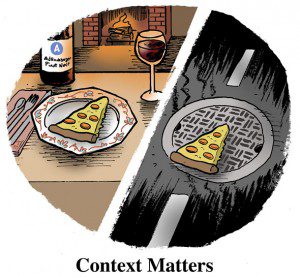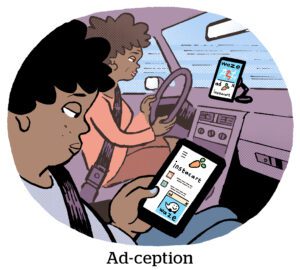Tired: vanilla contextual targeting.
Wired: contextual targeting that uses emotion-based signals.
On Friday, Business Insider (BI) released a new targeting tool called SAGA reACT that analyzes the sentiment associated with its content alongside the emotional reactions the content produces to create actionable, emotion-driven audience segments.
But you could argue that BI is a little late to the party here.
Since 2018, The New York Times and ESPN have both offered their own ad targeting tools based on emotional response. USA Today has had an emotion-based targeting tool on the market since 2016.
So why is now the right time for BI to launch its offering? Two reasons, according to Erin Hennessy, VP of ad products innovation.
“One, the ability to look at [emotional resonance] is much more accessible with advancements in artificial intelligence,” she said. “And two, it performs.”
Making research matter to advertisers
BI has been experimenting with numerous different use cases for AI, including algorithmic recommendations, implementing a smarter paywall and parsing content for targetable signals. These efforts predated BI’s parent company Axel Springer announcing a partnership with OpenAI in December.
Meanwhile, BI has also been studying how different types of content can spur emotional responses among its readers. Its audience research team convenes panels of readers representative of its B2B audience and polls them on their emotional responses.
The new emotional targeting tool was born from pairing that research with AI to create a targeting solution its sales team can use to build direct deals and private marketplaces (PMPs).
Conducting research about audience insights isn’t enough to get advertisers to open their purse strings. They need easy-to-use targeting tools.
SAGA reACT feeds BI’s audience panel insights into a proprietary AI built on OpenAI’s GPT large-language models to find similar content in its portfolio that can produce the same reactions.
For example, BI’s research team found that its human-centric, first-person content resonates most with its readers. In a recent audience study, 74% of panelists said stories told from a real person’s POV help them relate more to the content. And 65% experienced higher levels of brand recall when they saw an ad in a story that triggered an emotional response.
Emotion-based targeting
BI aims to expand its pool of advertisers by courting those that might not have previously considered advertising in B2B content, Hennessy said.
One way to convince them is by highlighting areas where an audience’s emotional response aligns with the brand’s messaging even if the content itself isn’t a contextual bull’s-eye.
Finding content that creates the desired audience reactions is where AI comes in.
Hennessy highlighted a recent story BI published in its small business vertical about a person who launched their own Etsy company, a move that enabled them to travel the world. It would be easy enough to package such a story as a contextual fit for travel advertisers, but they typically don’t buy ads in small-business-focused B2B content, she said.
However, travel brand messaging complements content that creates an uplifted, aspirational mindset, she said. By appealing to the emotional connection rather than the content connection, BI’s sales team can make its case to a new set of advertisers.
The AI tool can also help the sales team find other similarly aspirational content to package into an emotion-based PMP or direct campaign.
Publisher benefits
Proactively packaging their inventory is one way for publishers to improve their margins.
Applying a layer of first-party targeting data allows BI to charge a premium price point for its inventory. BI anticipates that pricing for SAGA reACT segments will be similar to pricing for its other first-party data-enriched audiences, Hennessy said.
Plus, if campaign performance sees an uplift from emotion-based targeting signals, that justifies the higher price point and encourages repeat business.
The AI tool can help BI prove those connections between content and KPIs, Hennessy said.
For example, BI ran a test using SAGA reACT to look back at campaigns that ran against content in different emotion-based segments. It found content that created an empathetic response in readers produced a 10% higher click-through rate for ads appearing alongside that content.
Given such findings – and the opportunity for premium pricing – it’s no wonder publishers are turning to AI-based emotional analysis to boost their contextual targeting methodologies.














